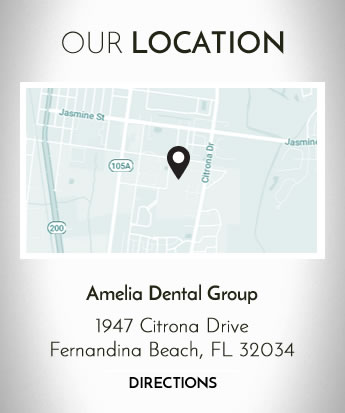
Traditional dentistry focuses on maintaining your oral health and treating any diseases you might have, while cosmetic dentistry is all about the way your smile looks. The goal of cosmetic dentists is to help you achieve the smile you’ve always wanted. It is becoming an increasingly popular area of dentistry because so many people want to look their best, and one of the utmost ways to do that is to have a beautiful smile.
There are numerous treatments and procedures available in cosmetic dentistry today. Here are some of the most popular ways that patients seek to transform their smiles:
- Teeth whitening, sometimes referred to as bleaching, relieves stains and discolorations that are affecting your teeth. It is a simple and quick process when performed by your cosmetic dentist, often taking only an hour out of your day. The results are usually amazing, making your teeth many shades whiter and eliminating embarrassing stains.
- Dental veneers cover up all kinds of smile imperfections. Problems like chips, cracks, discoloration, misalignment and more can be hidden under veneers. These thin porcelain shells are customized only for you, and are cemented directly onto the fronts of your teeth. A small amount of your tooth enamel must be removed in preparing your teeth, so veneers are a permanent solution for transforming your smile.
- Dental implants are a great solution for replacing missing teeth. Instead of going through the hassles associated with dentures or bridges, implants are a permanent restoration that becomes part of your body. A titanium rod is surgically placed into your jaw bone so that it fuses with the bone as it heals, and then an artificial tooth is placed on top. Implants are a secure and attractive way to restore your smile.
- Crowns, also called caps, are customized for every patient to fit over an existing tooth that has been severely damaged. They are often used to correctly shape broken, chipped or uneven teeth. Made of porcelain or acrylic with metal, crowns are strong and able to withstand biting forces that other restorations might not tolerate well.
Our dental office is located in Fernandina Beach

Many types of cosmetic dentistry procedures such as crowns, bridges, tooth implants, or other invasive procedures require some kind of anesthesia in order to be performed in comfort for the patient. Even a procedure like porcelain dental veneers can be aided by the addition of some kind of sedation dentistry, especially if the patient is experiencing anxiety or fear regarding the treatment. For any patient seeking a more relaxed cosmetic dental experience, sedation dentistry presents several options.
Inhaled sedation, or nitrous oxide, is more commonly known as “laughing gas.” It is inhaled via a mask and is controlled by your dentist. It is a light sedation, and allows you to remain completely responsive and compliant to instruction. Nitrous oxide sedation wears off quickly; because of this, you may be able to drive yourself home after your treatment.
Conscious oral sedation reduces your anxiety while still allowing for responsiveness to requests and directions. Oral sedatives are typically prescribed in pill form, and can be taken up to an hour before your dental procedure. Some dentists believe that taking a mild oral sedative the night before treatment can alleviate anxiety and ensure proper rest. You should not drive yourself home if you have taken an oral sedative for your dental treatment. You will not be fully alert.
IV sedation is also known as “sleep dentistry.” It provides the most relaxed dental experience, allowing you to be deeply sedated while never completely unconscious. A natural effect of the drugs is full or partial memory loss of the time during its use, so you may have no memories of your procedure. You should never drive following IV sedation, and you may not be fully alert for several hours. Plan to go home, rest, and sleep.
Your cosmetic dentist wants you to be comfortable throughout your dental therapy and will know which sedation dentistry option is right for your particular cosmetic dentistry procedure. Talk to your cosmetic dentist today about any concerns you have regarding your treatment so that you may have the most positive, pain and anxiety-free experience possible.
Our dental office is located in Fernandina Beach

A popular way to improve your smile by hiding embarrassing flaws is to get porcelain veneers. These thin shells are attached to the front surfaces of your teeth, and can stay looking natural and appealing for a lifetime with proper care. Here are some guidelines for maintaining your dental veneers.
Staining
Porcelain veneers are resistant to staining, so you have a good chance of keeping a bright smile. However, the bonding cement used to attach them to your teeth can become discolored. Ask your dentist about using stain resistant bonding materials when attaching your veneers.
Brushing
Brush your tooth at least twice a day to get rid of plaque, food particles, and potential stains. Use a soft toothbrush and non-abrasive toothpaste. Brush your gum lines where food can accumulate and damage your porcelain veneers. For efficient cleaning without being too harsh on your veneers, consider using an electric toothbrush.
Flossing
Ask your dentist to demonstrate proper flossing techniques so that you don’t use too much pressure and chip your veneers. However, do not neglect flossing at least once a day.
Eating
Avoid foods and drinks prone to staining your teeth, and do not bite on extremely hard items because that can chip your veneers.
Having checkups
Maintain regular checkups with your dentist at least twice a year to make sure your veneers and overall oral health remain in good condition.
Our dental office is located in Fernandina Beach

Most people are well aware certain foods are bad for teeth, but did you know some are very good for oral health? Listed below are just a few of the foods that could help your teeth and gums stay in tip top condition.
Salmon
Salmon is packed full of vitamin D which helps your body to absorb calcium from other foods, keeping your teeth and bones strong and healthy.
Onions
Onions might give you temporary bad breath, but they also contain sulfur that lowers the amount of decay causing bacteria in your mouth.
Strawberries
Strawberries are high in fiber and vitamins C, ensuring your gums are able to repair themselves and fight infection.
Pineapple
Pineapple is also high in vitamins C as well as an enzyme called Bromelain which helps promote healing. In addition pineapple increases saliva production, helping to wash away excess bacteria and sugars that could cause disease.
Quinoa
This fashionable grain is full of minerals including magnesium, manganese, phosphorus and calcium, all of which help strengthen your teeth.
Sesame Seeds
Sesame seeds contain plenty of calcium, helping to strengthen your teeth.
Shiitake Mushrooms
Shiitake mushrooms not only taste delicious, but also contain something called Lentinan which helps prevent the growth of bacteria in your mouth.
Wasabi
Wasabi is a type of Japanese horseradish that contains particular compounds that inhibit the growth of bacteria in your mouth.
Sea Salt
Sea salt contains numerous different minerals that help strengthen teeth.
Xylitol
Your dentist in Reno may recommend chewing xylitol gum after every meal as this ingredient helps inhibit bacterial growth, reducing the risk of gum disease and cavities.
Stevia
Ordinary sugar promotes bacterial growth, increasing acidity in the mouth. Stevia is a natural sweetener that doesn’t have this effect.
Of course a great diet is only half the story, and needs to be backed up with professional dental care from your dentist in Reno, and great daily dental care at home.
Visit our Fernandina Beach dental office for a dental cleaning.

Sedation dentistry is designed mainly to focus on patients experiencing fear and anxiety related to dental treatment; however, it is also an excellent choice for other patient types. Following are the main groups who experience relief and comfort from sedation dentistry:
- Patients experiencing anxiety and fear or a dental phobia
- Patients possessing an acute gag reflex
- Patients who have special needs
- Patients with physical issues that affect movement
- Anxious or fearful pediatric patients
Dental professionals want a patient to be as stress-free as possible immediately prior to and during a dental visit. Relieving anxiety and fear can turn an unpleasant, stressful experience into a comfortable visit, resulting in a desire to continue dental health and hygiene by returning for regular examinations and procedures.
An acute gag reflex can leave a patient concerned about vomiting during a dental procedure; in fact, many procedures such as taking impressions or working on the back teeth may be impossible. Sedation dentistry helps patients greatly reduce this gag reflex issue, as it is often exacerbated by anxiety and fear.
Patients who have special needs related to autism, Down Syndrome, or a mental or emotional problem may have real difficulty during dental visits. Other patients may deal with physical conditions such as cerebral palsy, Parkinson’s disease, or other disorders of the central nervous system. Patients in this group may have difficulty following instructions or remaining still. Sedation dentistry solves issues of involuntary muscle movements, allowing the dentist to safely and quickly complete treatment.
Fearful children can be problematic for dentists. Children who cannot be still, comply with instructions, or stop crying can cause time-consuming safety issues. Sedation dentistry allows a dentist to perform treatments without physical restraints that could cause emotional trauma to the child, leading to adult dental phobias and fears.
Visiting the dentist and caring for your dental health should be comfortable. Contact our dental office to see what can be done to make your visit as stress-free as possible using sedation dentistry in Fernandina Beach.

Most people will eventually lose one or more teeth. Even with vigilant oral care, accident or injury can cause the loss of a tooth. As we age, simple daily wear can cause damage to your teeth resulting in tooth loss. More commonly, periodontal disease or tooth decay will cause you to lose one or more teeth.
While you may think one missing tooth, especially one that does not actually show, is not a problem, most dentists recommend immediately replacing a missing tooth. Missing teeth are not only unappealing aesthetically, but also cause problems with your bite and speech. More critically, missing teeth can cause a chain reaction that results in more missing teeth. Because teeth shift to fill the space created by the missing tooth, those teeth become loose and may eventually fall out.
Another problem caused by missing teeth is jaw bone loss. The pressure of tooth roots into the bone cells keeps them from dissolving. If the root is missing, the bone cells die and the bone disintegrates. The loss of jaw bone results in facial collapse, giving you a caved in and much older appearance. Bone loss also causes remaining teeth to become loose and fall out.
One of the best options for replacing lost teeth are dental implants. The placement of dental implants and tooth restorations can prevent the bone loss that results from missing teeth. Not only do dental implants restore the look of your natural teeth, they also provide the function and feel of your original teeth. Dental implants allow you to return to eating and speaking normally, and return your smile to its natural glory. To find out if dental implants are a viable solution to your missing teeth, contact your dentist for an examination and evaluation. With dental implants you can restore the look, feel and function of your natural smile.
Schedule your appointment at our Fernandina Beach dental office







